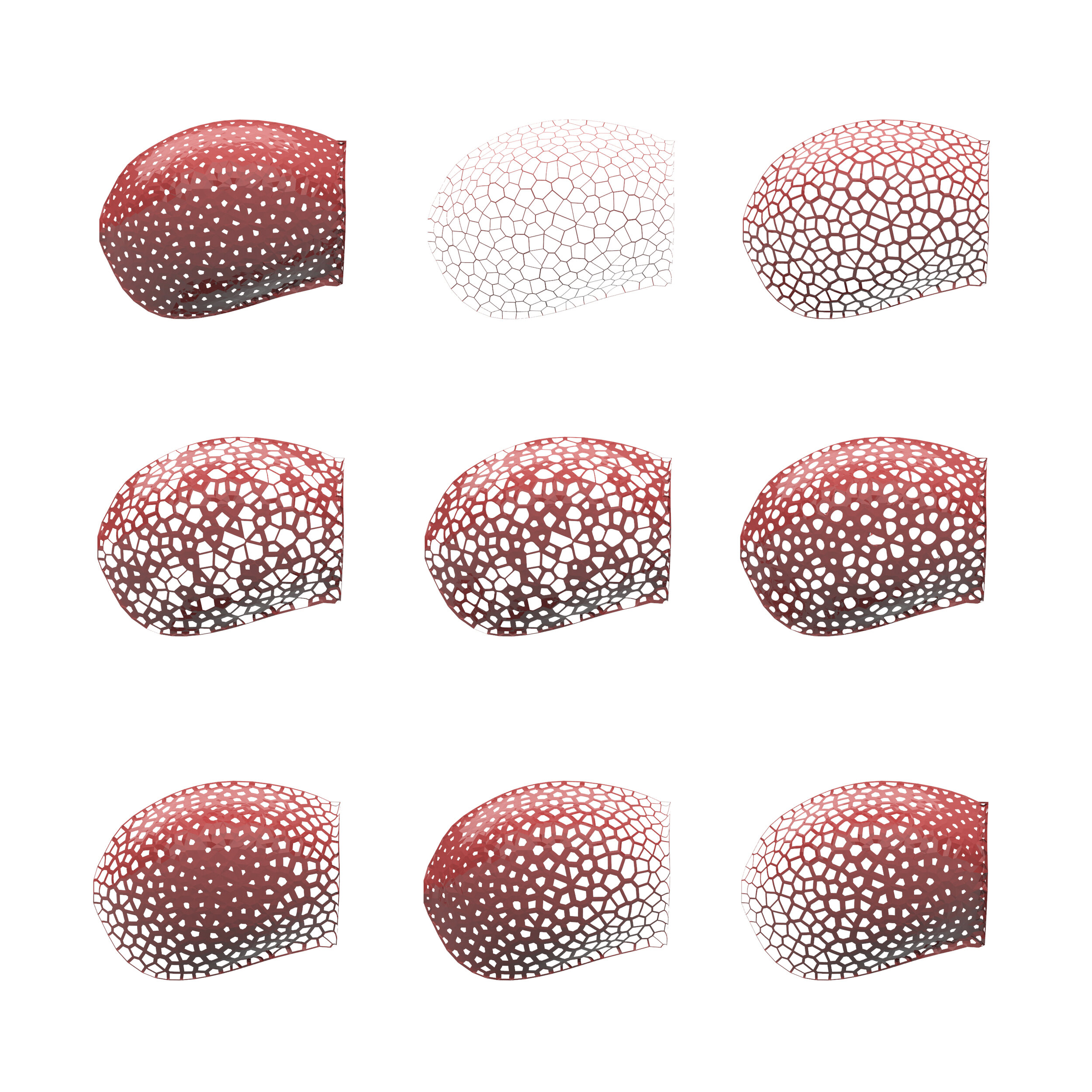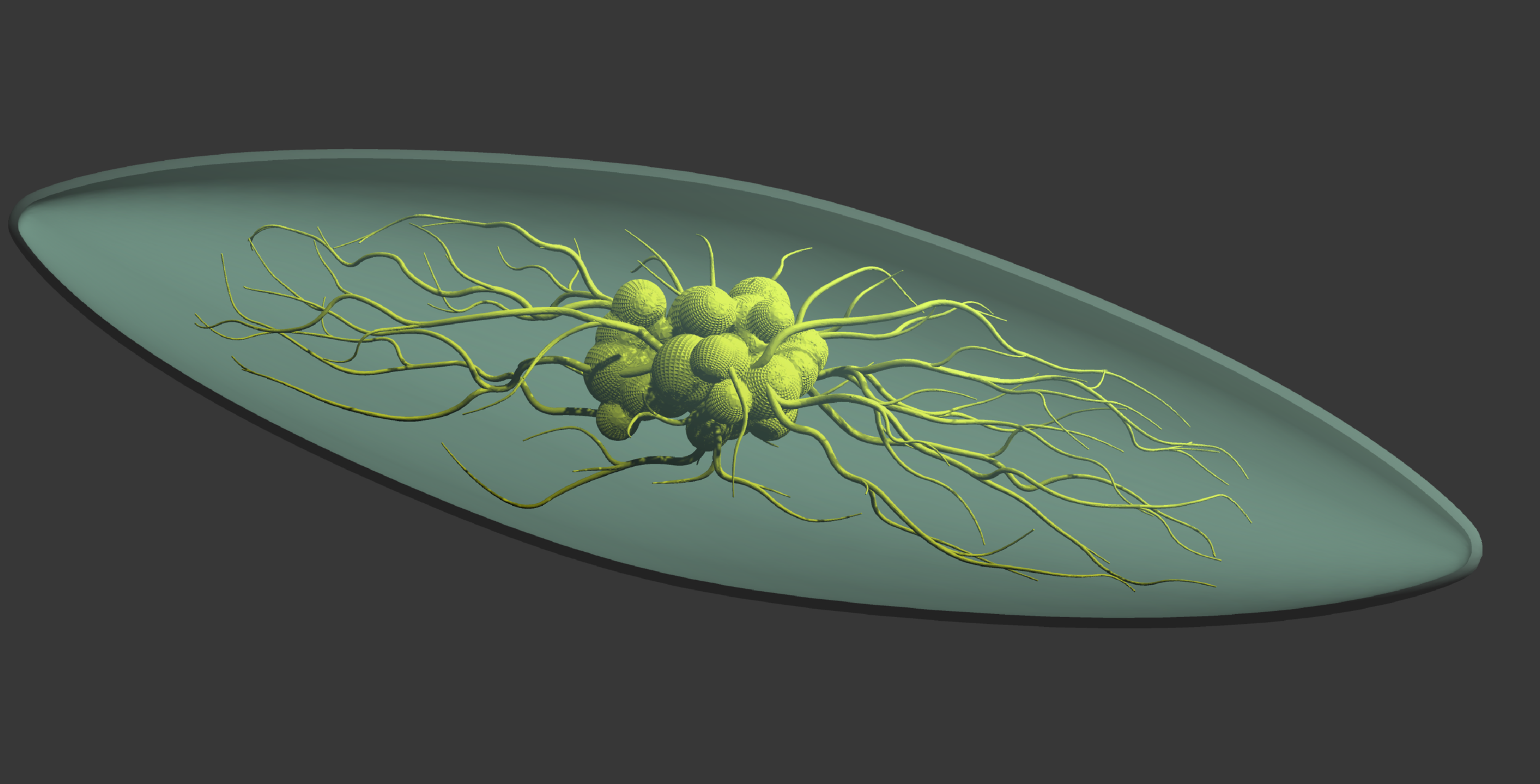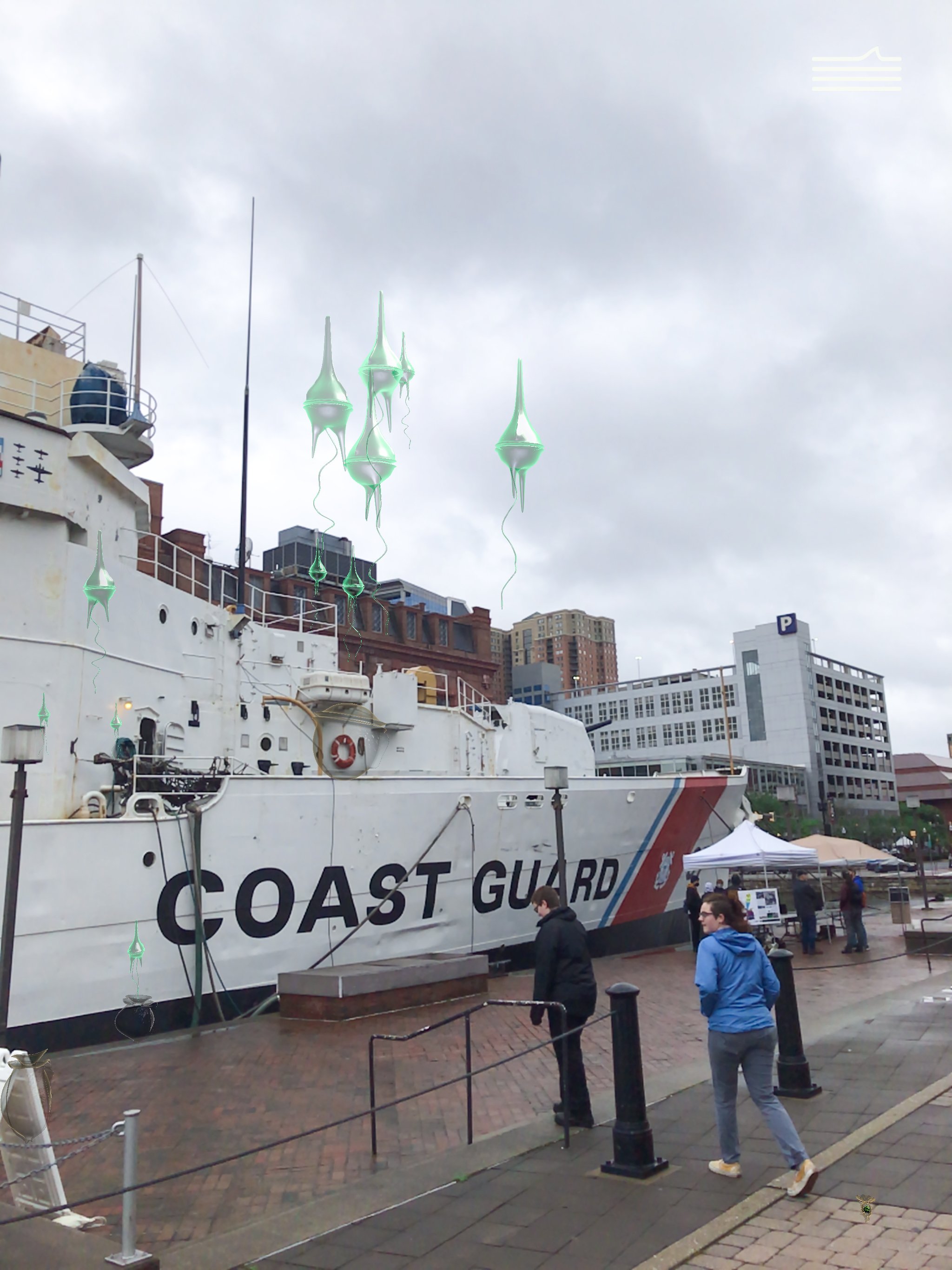UNDER THE BAY
An Animated Story Told by the Largest Estuary in North America
[ in AR/XR and a Podcast ]
Experiential Reality [ XR ] Installation
“Wall of Wonder” [detail] 96”x576” Experiential Reality version of “Under the Bay.” Chalk, paint, graphite, looping monitors, assemblage objects and misc matter; 6 iPads each containing a ten-minute animated story with Chesapeake Bay live data-stream. Installed at the Peale Museum, 2024.
Top: “Wall of Wonder” [detail, one of two panels] 96”x576” Experiential Reality installation of “Under the Bay.” Chalk, paint, graphite, looping monitors, assemblage objects, 6 iPads, each containing a ten-minute animated story with a Chesapeake Bay live data-stream. Installed at the Peale Museum, 2024.
Middle: Ahlam Khamis demonstrating how Under the Bay’s AR works with the “Wall of Wonder” in the La Trobe Gallery.
Bottom image: artists rendition of AR in the La Trobe Gallery, “Wall of Wonder” in the background.
Augmented Reality [ AR ] APP
“Under the Bay” tells the story of a world beneath the surface of the Chesapeake Bay and really all estuaries and oceans. Created by an artist and marine biologist, this augmented reality project, allows users to point their own cell phone at the water — or anywhere in the world — like a microscope and see and hear the hidden invisibilities under the Chesapeake Bay. When they do, a series of stories between humans and non-humans emerge.
The narrator describes the Chesapeake Bay in both enlightenment and medieval terms where personal observation is intertwined with scientific knowledge unpacking recent political events and arguing for diversity broadly. Some episodes see microbes like faeries and the planet as an ensouled body soaked in a wet film that inhales and exhales like a living organism. Observations on algae blooms are compared with social issues, monuments, protests, and US elections, all describing a world out of balance.
Underwater sensors located throughout the Chesapeake Bay collect data on the water’s oxygen and salt levels, pH, temperature, etc. The live data streams into the app, allowing the stories, images, and electronic music to be driven by the current conditions of the water. The data from the Bay will direct how the organisms appear and how the story is told. In addition to affecting the animation’s speed and color, originally composed music will also change reverb, EQ, and other parameters, based on the water conditions. For instance, when oxygen conditions are good, the narrator’s voice is clear, but when the Bay oxygen is low or anoxic, the voice will sound choppy, as if choking.
Behind the scenes, marine biologist, Dr. Tsetso Bachvaroff, shares his expertise on the Bay water, its data and the DNA of the invisible organisms. Dinoflagellates and diatoms produce most of the world’s oxygen and are the ancestors of humans by hundreds of millions of years. Before they outlive humans, they reveal their remarkable survival strategies to us and inspire how we may learn to live in this project.
Viewers may select one of 8 scenes with images and sounds evolving each time they open the app. In the evening the app offers originally composed music and animation inspired by bioluminescence that’s also affected by the incoming water data. A calendar will allow the user to go back in time to hear what the Bay was saying on a particular date, perhaps during an algae bloom. The user may also change sites in the Bay or turn off the data altogether to experience different effects.
“Under the Bay”, tells a unique story for every user, changing over time, over seasons, but always influenced from the viewpoint of the water itself.
Data Sites
When the viewer opens “Under the Bay” data is automatically streaming in from underwater sensors located at the National Aquarium East. The Maryland Department of Natural Resources monitors the data in this Inner Harbor site where floating wetlands are planned. Over time, the wetlands will change the appearance of the animations and sounds. The user can choose any of the six different sites throughout the Chesapeake Bay in Maryland and Washington DC to monitor differences on a given day. The user can also go as far back in time as 2017 to see the different climate effects over seasons and years, such as the dates of known algae bloom.
++
“Under the Bay” User Interface overlayed on Scene 07 “Vaccine Blooms with Pink Hats”
++
Excerpt from “Under the Bay Trailer” 2023.
This video shows an excerpt of each scene without the AR camera.
UNDER THE HOOD \\ This video features how and where data comes from, including its effect on Dan Deacon’s music.
UNDER THE HOOD \\ This video describes how data is used to manipulate images and sounds.
++
PODCAST
“Under the Bay” PODCAST, 70 minutes of stories, music of eight scenes; mp3 player, headphones, cards with QR code links to podcast. Installed at the Peale Museum, with Ahlam Khamis, 2024.




















































